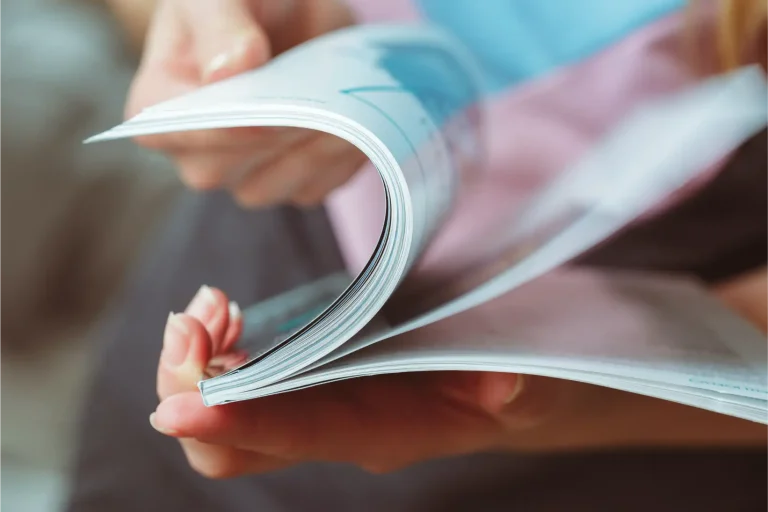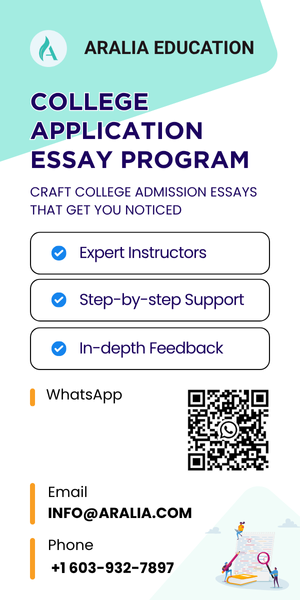Why Movies Make Great Language Teachers
Textbooks may teach you grammar rules, but movies teach you how people actually talk. When you watch a well-written film, you both memorize vocabulary and absorb rhythm, slang, humor, and the subtle social cues that separate fluent speakers from textbook learners.
Movies also provide something that grammar exercises can’t: context. You see expressions, gestures, and real-life situations that bring the language alive. And because emotion strengthens memory, you’re far more likely to remember a clever line that made you laugh than a word list you memorized. Research shows that learners need to encounter words around 8 to 10 times before they truly stick, and revisiting their favorite movie scenes turns that repetition into something enjoyable rather than a chore.
The films we suggested below represent different eras, social groups, and speaking styles. Each one offers unique linguistic value, from razor-sharp wit to heartfelt sincerity. Let’s dive in.
1. Clueless (1995)
Set in Beverly Hills, this classic movie follows Cher Horowitz, a fashionable high schooler who decides to give a new student a makeover while navigating the social complexities of her privileged world. Based loosely on Jane Austen’s Emma, the film transforms 19th-century matchmaking into 1990s teen culture.
For English learners, Clueless is a goldmine of American teenage slang from the mid-’90s. Terms like “as if,” “whatever,” and “totally buggin'” became cultural touchstones. While some phrases are dated, the film’s influence on American vernacular is undeniable. More importantly, it demonstrates how tone and delivery transform simple words into comedy. Alicia Silverstone’s performance shows you don’t need complex vocabulary to be articulate. Sometimes, confidence and timing matter more.
The film also provides insight into American youth culture and status dynamics. Pay close attention to how characters use exaggeration and vocal inflection for emphasis.
Aralia Students Achieve English Language Excellence
2. Mean Girls (2004)
Set in a suburban Illinois high school, Mean Girls follows Cady Heron, a homeschooled teenager who enters public school for the first time and quickly learns that high school social life has its own complex hierarchy. Written by Tina Fey, the film offers razor-sharp dialogue filled with irony, humor, and cultural references that continue to shape modern slang even after two decades.
For English learners, Mean Girls is a treasure trove of everyday expressions, sarcasm, and idiomatic phrases that reflect authentic teenage and American pop culture speech. Lines like “You can’t sit with us!” and “That is so fetch!” became cultural staples because of their memorable rhythm and tone. The film’s dialogue demonstrates how intonation and context can turn simple words into social weapons or playful jokes. Listening carefully to how characters deliver lines, especially Regina George’s calm authority compared with Gretchen Wieners’ nervous chatter, helps you understand how subtle vocal cues express their power, insecurity, or humor.
The classic movie also illustrates the unspoken rules of social hierarchy and group dynamics, concepts often embedded in real-world English conversations. By observing how characters navigate peer pressure, gossip, and alliances, learners can gain a deeper sense of pragmatic language use: when to speak, when to stay silent, and how tone shapes meaning.
Beyond vocabulary, Mean Girls is an excellent study of register shifting. Notice how Cady’s speech changes as she assimilates into “The Plastics,” adopting their slang and cadence before rediscovering her authentic self. This mirrors a common linguistic journey for many language learners who adapt to fit in and later find balance between fluency and individuality. With its witty script and exaggerated yet relatable dialogue, Mean Girls turns teenage drama into a surprisingly effective English lesson in tone, timing, and cultural nuance.
3. Legally Blonde (2001)
Elle Woods, a fashion-obsessed sorority president, follows her ex-boyfriend to Harvard Law School to win him back. Instead, she discovers her own intelligence and legal talent, challenging everyone’s assumptions about her capabilities as a female law student.
What makes Legally Blonde valuable for language learners is its contrast between casual and professional English. Elle’s Valley Girl speech patterns: upbeat, peppered with “likes” and “ums” clash hilariously with Harvard’s formal academic environment. As the film progresses, you witness her navigate both registers without losing her authentic voice. This shows that maintaining your personality while adapting language to different settings is also a crucial skill to practice.
The courtroom scenes introduce legal terminology in accessible ways, while Elle’s interactions with classmates showcase everything from friendly banter to competitive verbal sparring. Reese Witherspoon’s clear enunciation also makes the dialogue easy to follow, perfect for intermediate learners. For example, in one memorable courtroom moment, Elle confidently explains, “Because isn’t it the first cardinal rule of perm maintenance that you’re forbidden to wet your hair for at least 24 hours after getting a perm?” This line blends humor with clear, articulate speech and legal reasoning.

4. The Devil Wears Prada (2006)
In this stylish drama-comedy, a recent journalism graduate lands a job as the assistant to Miranda Priestly, the formidable editor-in-chief of a high-fashion magazine. Beneath the glossy surface, The Devil Wears Prada is a story about ambition, communication, and self-discovery.
The film is a masterclass in professional dialogue and power dynamics. The contrast between Miranda’s precise, clipped diction and Andy’s hesitant responses highlights how tone, word choice, and pacing signal authority in English. Lines like “That’s all” or “By all means, move at a glacial pace. You know how that thrills me.” reveal how subtle sarcasm and understatement can convey dominance or disapproval.
This classic movie also introduces learners to workplace vocabulary and idioms within a fast-paced corporate setting. Pay attention to how characters navigate conflict politely but firmly, as an essential skill in professional environments.
5. La La Land (2016)
Set in modern-day Los Angeles, La La Land follows two dreamers, an aspiring actress and a jazz musician, as they chase their ambitions while navigating love and disappointment. Beyond its dazzling visuals and music, the film captures the rhythm of everyday English with warmth, wit, and sincerity.
La La Land offers a mix of natural conversation and lyrical expression. The exchanges between Mia and Sebastian feel spontaneous and alive, showing how pauses, interruptions, and tone shape meaning. Their playful banter demonstrates how fluent speakers build rapport and emotion through rhythm and timing rather than vocabulary alone.
For example, in the duet “A Lovely Night,” Mia teases, “What a waste of a lovely night,” and Sebastian playfully counters, “You say there’s nothing here? Well, let’s make something clear, I think I’ll be the one to make that call.” The rhythm and delivery of their lines reveal how tone and intonation can transform simple dialogue into musical storytelling. Because the film moves fluidly between speech and song, it captures the natural melody of English conversation in a way that’s both expressive and instructive for learners.
The film’s language reflects modern American speech: casual, emotionally charged, and layered with subtle irony. Watching how the characters move between hope and heartbreak teaches learners how to express emotions and thinking while using adaptive phrasing and delivery. In that way, La La Land becomes more than just a love story. It creates the impression that language, like music, carries emotion through tone and tempo.
6. Superbad (2007)
Two inseparable high school seniors, Seth and Evan, embark on a chaotic quest to buy alcohol for a party, hoping it will make them popular and help them connect with their crushes before college separates them. What follows is a night of misadventures that tests their friendship and forces them to confront the challenges of growing up, including navigating responsibility, independence, and the changes that come with leaving high school behind.
Fair warning: Superbad contains crude humor and frequent profanity. But for advanced learners interested in authentic teenage male friendship dynamics, it’s remarkably realistic. The rapid-fire dialogue between Seth and Evan captures how close friends communicate: interrupting, finishing each other’s sentences, and using inside jokes or references that outsiders wouldn’t understand. For example, when Seth proudly introduces himself as “McLovin,” Evan immediately responds, “That’s the stupidest name I’ve ever heard,” highlighting their playful, fast-paced banter.
The film demonstrates informal American English at its most unfiltered. You’ll hear slang, creative insults, and the kind of rambling, anxiety-driven conversations that happen in real life but rarely appear in language textbooks. If you can follow the quick back-and-forth between characters, you’re well on your way to conversational fluency. Just remember: context matters. This vocabulary works among friends, but not in job interviews.
Unlock the Joy of Reading Early!
7. White Chicks (2004)
Two male FBI agents go undercover as female white socialites to protect hotel heiresses from a kidnapping plot. The absurd premise fuels comedy while exploring themes of race, gender, class, and the performance of identity, all conveyed through exaggerated and over-the-top character portrayals.
White Chicks offers a unique linguistic angle: watching characters deliberately perform a specific social identity. The Wayans brothers imitate Valley Girl speech patterns, upscale slang, and the particular cadence of wealthy young women from the Hamptons. While exaggerated for comedy, the film highlights real patterns in American class-based speech.
You’ll encounter phrases like “Oh my God,” drawn-out vowels for emphasis, and the strategic use of “like” as a filler word. The classic movie also demonstrates how tone conveys meaning; the same words can express excitement, disgust, or disbelief depending on delivery. For learners struggling with American intonation patterns, this film (despite its over-the-top approach) offers useful examples of emotional expression through the voice.
8. 10 Things I Hate About You (1999)
This film showcases articulate, intelligent teenage dialogue alongside typical high school banter. Kat’s vocabulary is notably sophisticated. She references Sylvia Plath and feminist theory while still sounding like an authentic teenager. The contrast between her sharp, deliberate speech and her sister’s more conventional teenage patterns provides excellent examples of personality expression through word choice.
The classic movie also features one of the most famous scenes for English learners: Kat’s poetry reading of the titular “10 Things I Hate About You.” The poem’s simple structure and heartfelt delivery show how English can be both expressive and easy to follow. For example, she begins:
“I hate the way you talk to me,
And the way you cut your hair.
I hate the way you drive my car,
I hate it when you stare.”
The repetition and clear rhythm make the lines accessible, while the emotional honesty helps convey meaning beyond the words themselves. Even the 90s teen slang feels surprisingly familiar today, much of it having evolved into contemporary usage.
We’ve also published a list of 8 classic TV shows to help students boost their English skills, featuring series that teach conversational phrases, cultural nuances, and natural speech in a fun and engaging way. You can check out the full list here.
Learn English with Aralia
Dive into the world of English literature and sharpen your writing skills with Aralia! Our classes go beyond grammar and vocabulary, as they inspire creativity, critical thinking, and a love for stories. Students explore classic and contemporary works, analyze themes, and practice expressing ideas clearly and confidently.
Aralia also offers exciting writing competitions, giving students the chance to showcase their talent, receive feedback from experienced instructors, and gain recognition for their work. Whether you’re crafting poems, short stories, or essays, these competitions encourage growth and celebrate creativity.

Writing Competition – Winter
This class is offered in the winter every year. Students from 13 to 18 years old wanting to learn how to shape their written English into effective and publishable creative pieces will find this particular Writing Competition course very exciting. The class will be shown a range of tools to learn the nuances of controlled, purposeful writing, including: figurative language, effective structuring and specific forms that they will apply to their own pieces.

English Literature
In this course, students will develop skills in critically reading literature. They will also practice writing skills, including how to write arguments to support claims about what they read. This class is ideal for any student who wishes to be prepared once school resumes in a high school English class.









